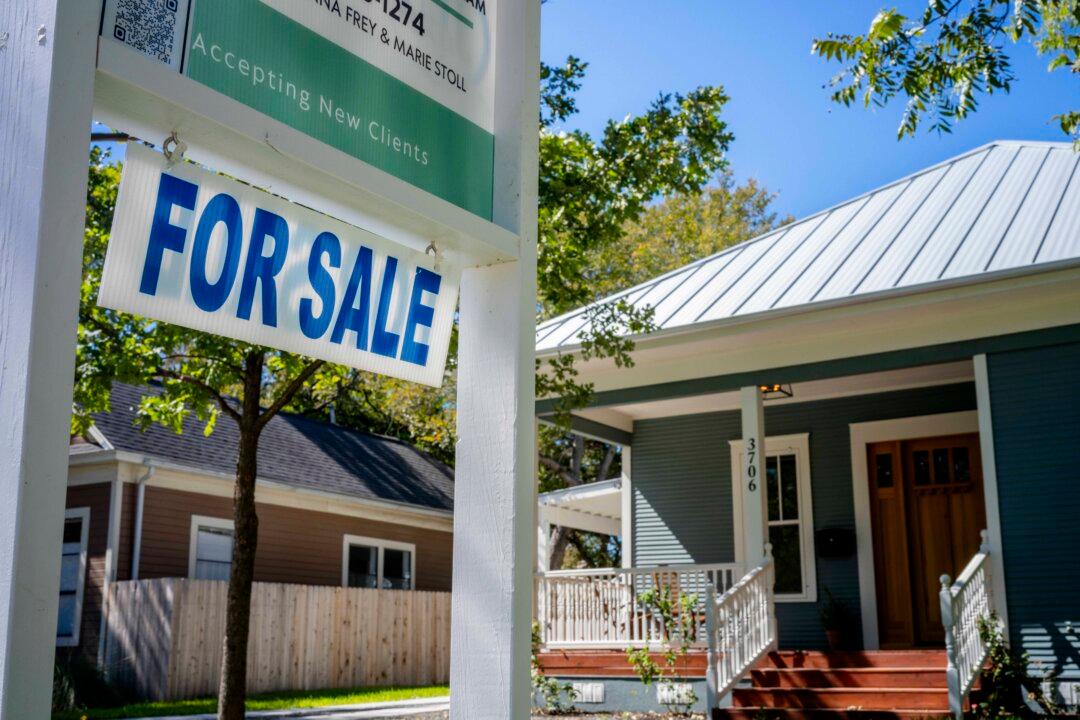National Association of Realtors (NAR) chief economist Lawrence Yun this past weekend predicted a 9 percent increase in home sales for 2025 and a 13 percent hike for 2026.
Yun issued his forecast on Nov. 8 at NAR’s Residential Economic and Trends Forum in Boston. He noted that both 2023 and this year have been challenging for existing sales.
The year “2024 has been a very difficult year on many fronts. We did not get the home sales recovery this year after an awful 2023,” he said.
However, he indicated that there was a slight growth in pending home sales in September.
“Maybe the worst is coming to an end,” he said.
Currently, the home ownership rate remains much lower among younger Americans and first-time homebuyers, as they are experiencing problems entering the market. Yun indicated that since the COVID-19 pandemic, U.S. job gains have led to record-high payroll employment, as of last month.
“When more people work, they have the capacity or they’re in a better position to buy a home,” he said.
Yun also said he believes that mortgage rates will stabilize at around 6 percent and that he expects there will be four different rounds of rate cuts in 2025, during the second presidency of Donald Trump.
“Mortgage rates in his first term—at 4 percent—were the good old days,” he said. “It’s more likely that we’ll go back to a new normal bouncing around 5.5 to 6.5 percent.”
Jessica Peters, real estate agent and founder of the Jessica Peters Team at Douglas Elliman in Brooklyn, told The Epoch Times that lower mortgage interest rates may not necessarily bring down the cost of homes.
“If banks lower the rates, prices may increase by up to 10 percent,” she said. “If rates stay the same, prices are still likely to continue rising, though the exact impact and percentage is uncertain and can vary by neighborhood and property type, especially in New York City.”
Peters said that commercial bank rates would be affected, but not dictated by the Federal Reserve.
“Even with stable or lower Fed rates, the cost to build properties is still quite high,” she said. “And if it costs more to build, prices will not come down.”
Yun forecasts that median sales prices across the United States will be at least 2 percent higher in both 2025 and 2026.
The national median single-family, existing-home price currently stands at $418,700, representing a 3.1 percent gain over the same time last year. As of this week, NAR reports that the 30-year fixed mortgage rate is within the range of 6.08 to 6.95 percent.
“Home prices remain on solid ground as reflected by the vast number of markets experiencing gains,” Yun said.
“A typical homeowner accumulated $147,000 in housing wealth in the last five years. Even with the rapid price appreciation over the last few years, the likelihood of a market crash is minimal. Distressed property sales and the number of people defaulting on mortgage payments are both at historic lows.”
The top 10 metro areas with the largest year-over-year median price increases all experienced growth of at least 10.6 percent. They include Racine, Wisconsin, (13.7 percent); Youngstown-Warren-Boardman, Ohio–Pennsylvania, (13.1 percent); Syracuse, New York, (13 percent); Peoria and Springfield, Illinois, (12.4 and 12.3 percent, respectively); Burlington-South Burlington, Vermont, (11.7 percent); Shreveport-Bossier City, Louisiana, (11.5 percent); Rockford and Decatur, Illinois, (11.1 and 10.9 percent, respectively); and Norwich-New London, Connecticut, (10.6 percent).
Eight of the top 10 most expensive markets in the United States were in California, with the San Jose-Sunnyvale-Santa Clara area garnering the highest prices with a median single-family home cost of $1.9 million. Also making the list are Honolulu, Hawaii, with a median sales price of $1.38 million, and Boulder, Colorado, with the lowest median in this category at $832,000.
Michelle Perry, president of the Santa Clara County Association of Realtors, has been in the business for more than 30 years. An agent with Christie’s International Realty in Morgan Hill, she refers to the current market in her region as “unbelievable.”
“More than half of the 400 single-family homes on the market in San Jose are listed at over $2 million,” she told The Epoch Times. “That price will get you a 2,000-square-foot home on an average lot with three to four bedrooms.”
Homes that are in top condition with pools will often command over-asking prices due to bidding wars. Typically, those homes sell within just seven days.
“Of course, there’s a large percentage of people who can’t afford to buy a home, so many of them are renting or purchasing a home at least an hour away and commuting to work here,” she said.
Perry noted there are three specific groups of people who are buying homes: 30- and 40-year-olds with well-paying jobs who have waited and saved enough for a down payment, those who have cashed in stock options, and those who are getting assistance from family members.
“A lot of these sales are also cash deals,” she said.
People who have decided to stay in the area and rent typically pay about $2,500–$3,000 a month for a one-bedroom apartment.
“We’re hoping that further interest deductions in 2025 will start to open up the market a bit more because there are still a lot of people on fence when it comes to buying and selling,” Perry said.
Still, she doesn’t expect to see home prices decline.
However, the NAR report indicates that nearly 13 percent of U.S. metro area markets, 29 of 226, did experience home price declines in the third quarter.
“Housing affordability has been a challenge, but the worst appears to be over,” Yun said. “Rising wages are outpacing home price increases. Despite some short-term swings, mortgage rates are set to stabilize below last year’s levels. More inventory is reaching the market and providing additional options for consumers.”
What this means for potential first-time homebuyers is that a typical “starter home,” now valued at $335,900 with a 10 percent down-payment loan, will cost the homeowners about $2,097 per month. This amount is down by 5.5 percent from the second quarter, when the approximate monthly cost was $2,218.
Overall, a family now needs a qualifying income of at least $100,000 to afford a 10 percent down-payment mortgage in 42.5 percent of markets.






